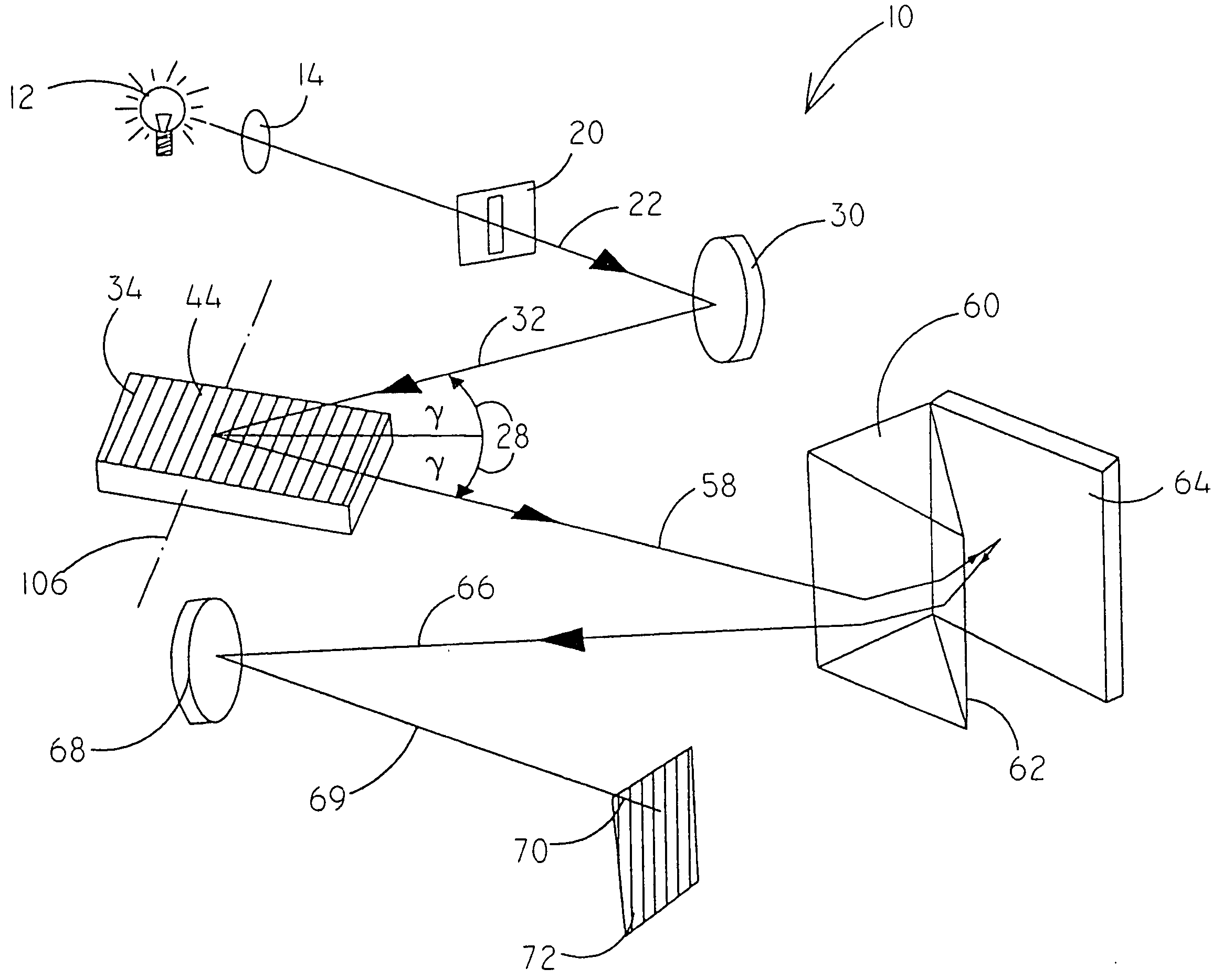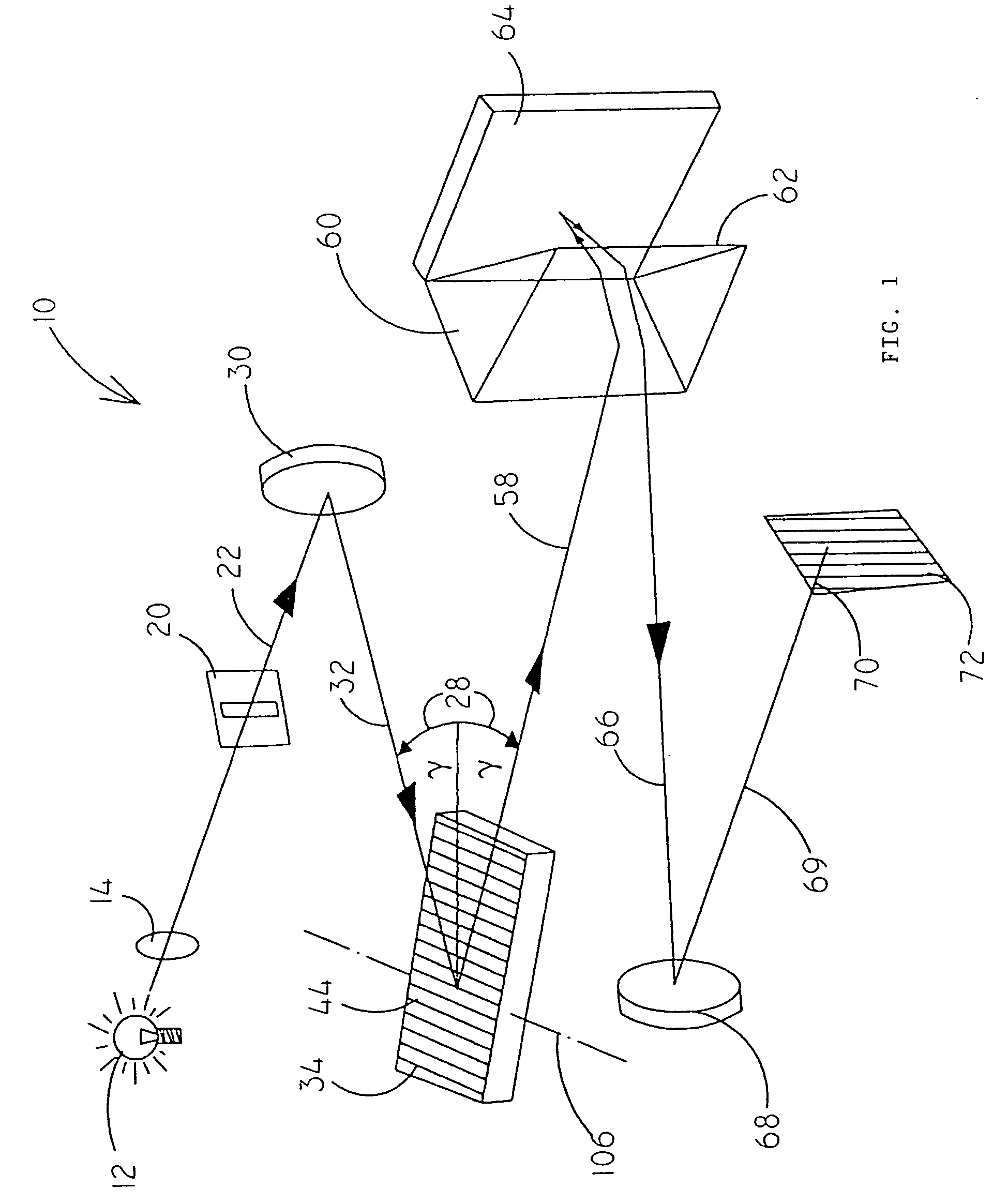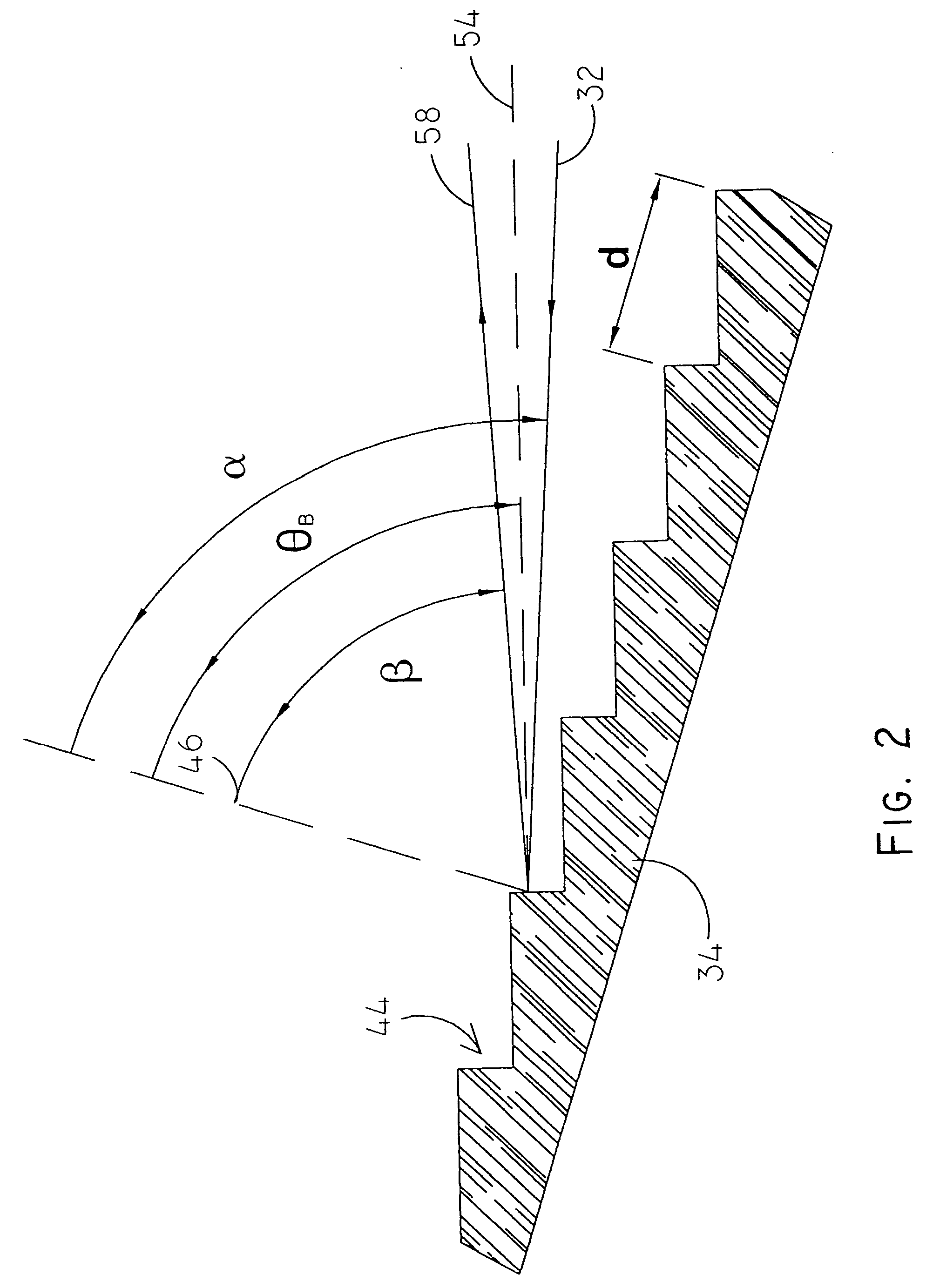Method for the analysis of echelle spectra
- Summary
- Abstract
- Description
- Claims
- Application Information
AI Technical Summary
Benefits of technology
Problems solved by technology
Method used
Image
Examples
Embodiment Construction
[0095] In FIG. 1 an echelle spectrometer 10 according to the invention is schematically shown. The light of a light source 12 is focused by means of a lens 14 or a mirror onto an entrance slit 20. The optical axis is represented by a line 22 in FIG. 1. The light enters through the entrance slit 20 and is parallelized by means of a spherical concave mirror 30. Then the parallel bundle 32 meets an echelle grating 34 where it is dispersed. The grooves of the grating 44 run in a horizontal direction. The dispersion is perpendicular to the grooves, i.e. in a vertical direction in FIG. 1.
[0096] In FIG. 2 the echelle grating 34 again is shown in greater detail. The distance between the grooves of the grating is denoted d. The angle between the incoming beam 32 and the normal line 46 on the grating is denoted .alpha.. The angle between the diffracted beam 58 and the normal line 46 on the grating is denoted .alpha.. .theta..sub.B denotes the blaze angle of the grooves 44 of the echelle grati...
PUM
 Login to View More
Login to View More Abstract
Description
Claims
Application Information
 Login to View More
Login to View More - R&D
- Intellectual Property
- Life Sciences
- Materials
- Tech Scout
- Unparalleled Data Quality
- Higher Quality Content
- 60% Fewer Hallucinations
Browse by: Latest US Patents, China's latest patents, Technical Efficacy Thesaurus, Application Domain, Technology Topic, Popular Technical Reports.
© 2025 PatSnap. All rights reserved.Legal|Privacy policy|Modern Slavery Act Transparency Statement|Sitemap|About US| Contact US: help@patsnap.com



